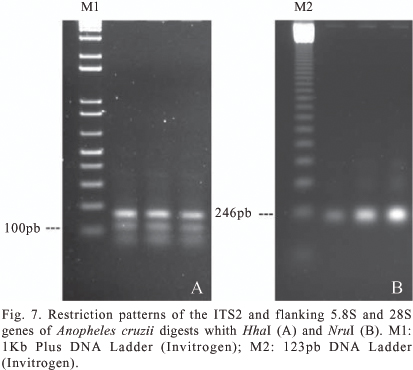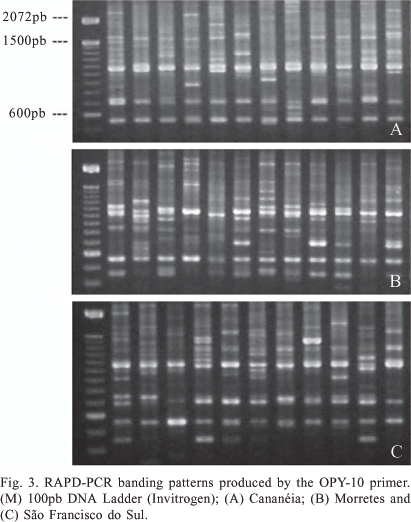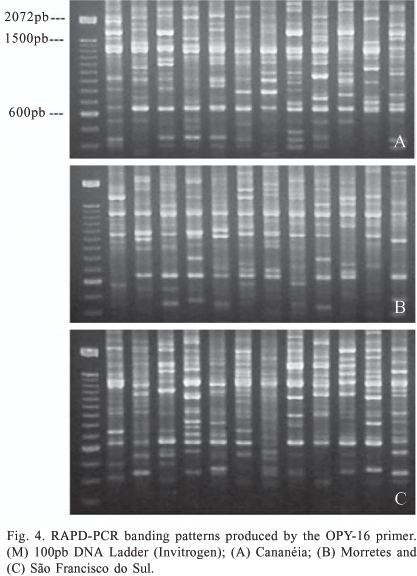The aim of the present study was to examine genetic variability in populations of An. cruzii by employing PCR-RAPD and PCR-RFLP markers. All analyses were carried out using individuals of the F1 generation of wild caught females obtained in Santa Catarina State (Florianópolis and São Francisco do Sul), Paraná State (Morretes, Paranaguá and Guaratuba) and São Paulo State (Cananéia). In the PCR-RAPD experiments, seven primers were used for comparisons within and among populations. The restriction profile of the ITS2 including a fragment of both 5.8S and 28S regions of the rDNA was obtained with the enzymes BstUI, HaeIII, TaqI, HhaI, Sau96I, HinfI, HincII and NruI. The PCR-RAPD method detected a large number of polymorphic bands. Genetic distance among populations of An. cruzii varied from 0,0214 to 0,0673, suggesting that all individuals used in the analyses belong to a single species. The number of migrants per generation (Nm) was 4.3, showing the existence of gene flow among populations. The restriction profile of the ITS2, 5.8S and 28S gene regions was similar in all An. cruzii samples, whereas the results obtained by using HhaI and NruI are indicative that the individuals analyzed have nucleotide sequences distinct from those of An. cruzii samples from Peruíbe and Juquiazinho deposited in GenBank.
Anophelinae; genetic variability; ITS2; molecular markers









